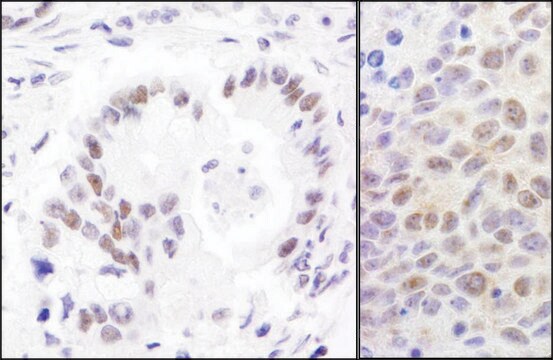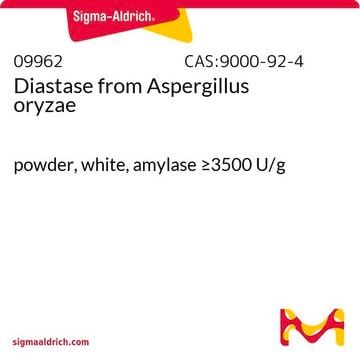NA13
Anti-Replication Protein A (Ab-1) Mouse mAb (RPA70-9)
liquid, clone RPA70-9, Calbiochem®
Synonym(s):
Anti-RP-A
About This Item
Recommended Products
biological source
mouse
Quality Level
antibody form
purified antibody
antibody product type
primary antibodies
clone
RPA70-9, monoclonal
form
liquid
contains
≤0.1% sodium azide as preservative
species reactivity
human, yeast
manufacturer/tradename
Calbiochem®
storage condition
do not freeze
isotype
IgG2a
shipped in
wet ice
storage temp.
2-8°C
target post-translational modification
unmodified
Gene Information
human ... RPA1(6117)
General description
Immunogen
Application

Frozen Sections (2.5 g/ml)
Immunoblotting (1-5 g/ml)
Immunofluorescence (2.5 g/ml)
Immunoprecipitation (1 g/reaction)
Paraffin Sections (2.5 g/ml, no pre-treatment required)
Packaging
Warning
Physical form
Analysis Note
HeLa or U293 cells or colon carcinoma tissue
Other Notes
Brill, S.J. and Stillman, B., 1989. Nature342, 92.
Stillman, B., 1989. Annu. Rev. Cell. Biol.5, 197.
Tsurimoto, T. and Stillman, B., 1989. EMBO J.8, 3883.
Wobbe, C.R., et al. 1987. Proc. Natl. Acad. Sci. USA84, 1834.
Legal Information
Not finding the right product?
Try our Product Selector Tool.
Storage Class
11 - Combustible Solids
wgk_germany
WGK 1
flash_point_f
Not applicable
flash_point_c
Not applicable
Certificates of Analysis (COA)
Search for Certificates of Analysis (COA) by entering the products Lot/Batch Number. Lot and Batch Numbers can be found on a product’s label following the words ‘Lot’ or ‘Batch’.
Already Own This Product?
Find documentation for the products that you have recently purchased in the Document Library.
Our team of scientists has experience in all areas of research including Life Science, Material Science, Chemical Synthesis, Chromatography, Analytical and many others.
Contact Technical Service








